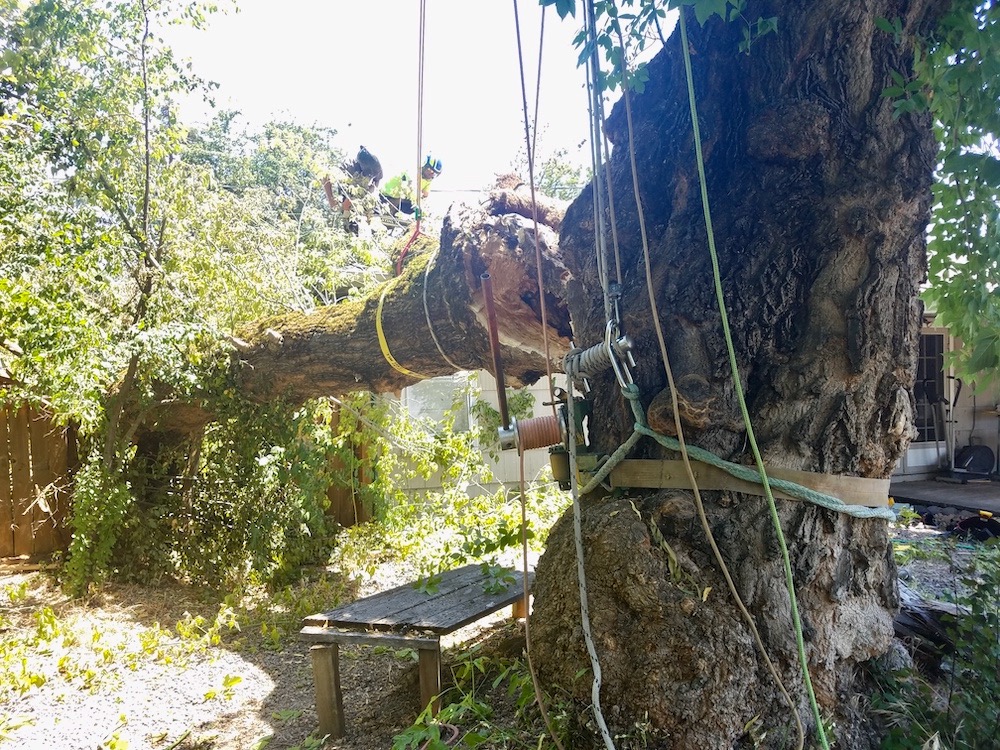Cabling and bracing techniques are commonly used in various situations to provide supplemental support to trees that have structural weaknesses or that pose a potential risk to people and property.
Our preference is always to find a solution to keep and preserve. Trees are vital to our communities, our eco-system, and they actually add value to your home too!
Here are some of the most common scenarios where these techniques are employed by the team at Siskiyou Tree Experts. Here we go.
The Common Use Cases for Cabling and Bracing
1. Multi-Stemmed Trees: Cabling and bracing are often used on trees with multiple stems or leaders that are prone to splitting apart. The cables or braces can help to secure the stems together and reduce the likelihood of splitting.
2. Preventative Care: These techniques may be used as a preventative measure for trees that have weak branch unions or structural defects but are otherwise healthy. By adding support before a problem becomes severe, arborists can help to prolong the life of a tree and reduce future risks.
3. Storm Damage Mitigation: In regions prone to storms, high winds, or heavy snow and ice, cabling and bracing can help to stabilize trees and reduce the risk of branches breaking during severe weather events.
4. Preservation of Significant Trees: For historic, landmark, or sentimental trees that people want to preserve, cabling and bracing can provide additional support to help maintain the tree’s structure and prolong its life.
5. Protecting Property and People: When a tree with structural weaknesses is located near a home, other buildings, public areas, or walkways, cabling and bracing can be used to reduce the risk of branches or the tree itself falling and causing damage or injury.

6. After a Partial Failure: If a tree has already had a limb break or a stem partially split but is otherwise in good health, cabling and bracing may be used to stabilize the remaining structure and prevent further damage.
7. Improving Tree Shape and Balance: In some cases, cabling is used to help redistribute the weight of a tree’s canopy, thereby improving its shape and reducing the stress on certain limbs.
8. Supporting Large, Heavy Limbs: When a tree has unusually large and heavy limbs that are prone to failure due to their weight, cabling can help to redistribute some of that weight and reduce the strain on the branch union.
The Verdict?
It’s important to note that cabling and bracing are not suitable solutions for all trees or in all situations. They are generally not recommended for trees that are severely decayed or dying, as these trees may be beyond saving and could pose significant risks regardless of cabling or bracing. These techniques should always be performed by a qualified and certified arborist, who can assess the tree’s health and structural integrity and determine the most appropriate course of action.
Lastly, cabling and bracing are part of a system of care that might also include regular inspection, pruning, fertilization, and disease/pest management, all aimed at promoting the health and longevity of the tree.
Learn more about our cabling and bracing services
Get in Touch
Schedule an onsite visit today! Let our tree experts assess the health and structural integrity of your trees and recommend the best course of action. Call us at 541-450-4085 or fill out our contact form.
